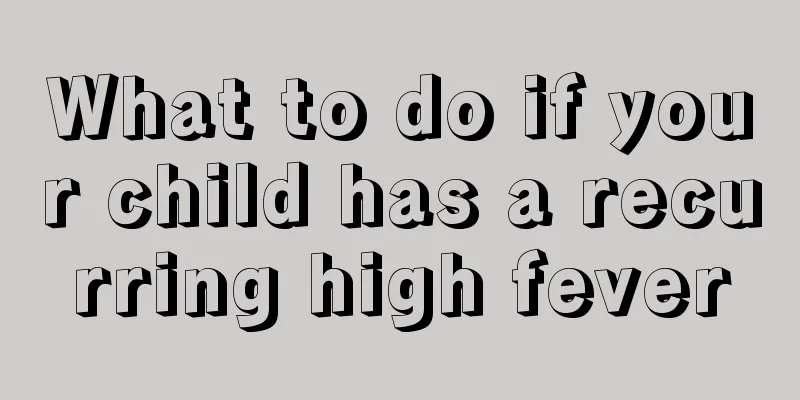What to do if you have a low fever due to hand, foot and mouth disease?

|
Hand, foot and mouth disease is relatively common at present, and it is also very harmful. It will cause many effects on a person's body. You need to pay attention after the occurrence of hand, foot and mouth disease. If the child's mental state is good and his appetite is good, there is generally no problem. However, if there is a low fever, loss of appetite, unwillingness to eat anything, and discomfort in the mouth, you should check whether there is herpes or ulcers, and you need to go to the hospital for a specific examination in time. What to do if you have a low-grade fever due to hand, foot and mouth disease Is a low-grade fever from hand, foot and mouth disease serious? If you find that your child has a low fever, and if the child is in good spirits, has a good appetite, and plays well, there is generally no big problem and you can observe the child at home. If the child has a low fever, loss of appetite, or is unwilling to eat, or has oral discomfort, parents can use a flashlight in a bright place to check for abnormal symptoms such as rashes, blisters, ulcers, etc., and observe whether there is a rash on the limbs, palms, and soles of the feet. If these conditions are found, go to the hospital as soon as possible, and observe closely and do not use antipyretics such as aminopyrine, which may worsen the condition. Ordinary cases of hand, foot and mouth disease are mild, and may only have fever and rash, which are mostly unrelated. However, when encountering some severe cases of hand, foot and mouth disease, such as children's body temperature persisting, even above 39 degrees, or above 38.5 degrees for more than three days, and the child has symptoms of mental abnormality, or is restless, or easily startled, these are all severe and require immediate treatment in the hospital to avoid delaying the disease. Laboratory tests: 1. Blood picture: Total white blood cell count and neutrophil count are mostly normal. 2. Virus isolation: Take the patient's blister fluid, saliva, etc., and after aseptic treatment, inoculate them respectively into: ① Intradermal part of the guinea pig's paw, blisters will appear between the toes after 4 to 5 days; ② Into the brain of mice and the abdominal cavity of suckling mice, causing death; ③ If cytopathic effects appear in pig kidney and calf kidney cell culture, it can be considered that the foot-and-mouth disease virus has been isolated, and its type can be further identified with specific serum. 3. Serological tests: The complement test is the most sensitive, and positive results can be obtained 10 to 20 days after onset. Other auxiliary examinations: There is currently no related content description. complication Some children may develop generalized papules and blisters, accompanied by aseptic meningitis, encephalitis, myocarditis, etc. Prognosis Generally, the course of the disease is good, with the whole illness lasting about 5 to 10 days. Most patients can recover on their own and the prognosis is good. |
<<: Early symptoms of foot-mouth and hand disease in children
>>: Do hand, foot and mouth disease blisters itch?
Recommend
What medicine should children take for nausea and vomiting?
Most babies have weak spleen and stomach when the...
Treatment of red spots on baby's body
The incidence of red spots on babies' bodies ...
Normal range of astigmatism for one-year-old baby
Generally speaking, when a baby is just born, the...
What foods are good for children with diarrhea?
Children also have diarrhea. If a child has diarr...
What is the cause of newborn skin peeling?
Every family hopes that their baby can grow up he...
What should I do if my child has phlegm in his throat?
For many parents, having a sick child is a headac...
Children need to be alert to these 4 "high-risk personalities"
3-6 years old is often referred to as the "w...
What causes moles in children?
There may be some misunderstandings about moles, ...
What are the baby stomach nourishing porridge
Some babies' stomachs are not very good and t...
Can children sleep on a cool mat?
Children's metabolism is relatively fast and ...
Why is the baby's sleep not good?
Generally speaking, when it comes to the quality ...
What should I do if my child’s feet smell?
Some people in life like to sweat and then have s...
Recovery period and treatment of bronchopneumonia in infants
Parents of children will find that after the baby...
Is mycoplasma infection contagious in children? It turns out this is the case
As we all know, mycoplasma infection in children ...
Children's cough folk remedies detailed introduction
Coughing is a common phenomenon among children, e...









